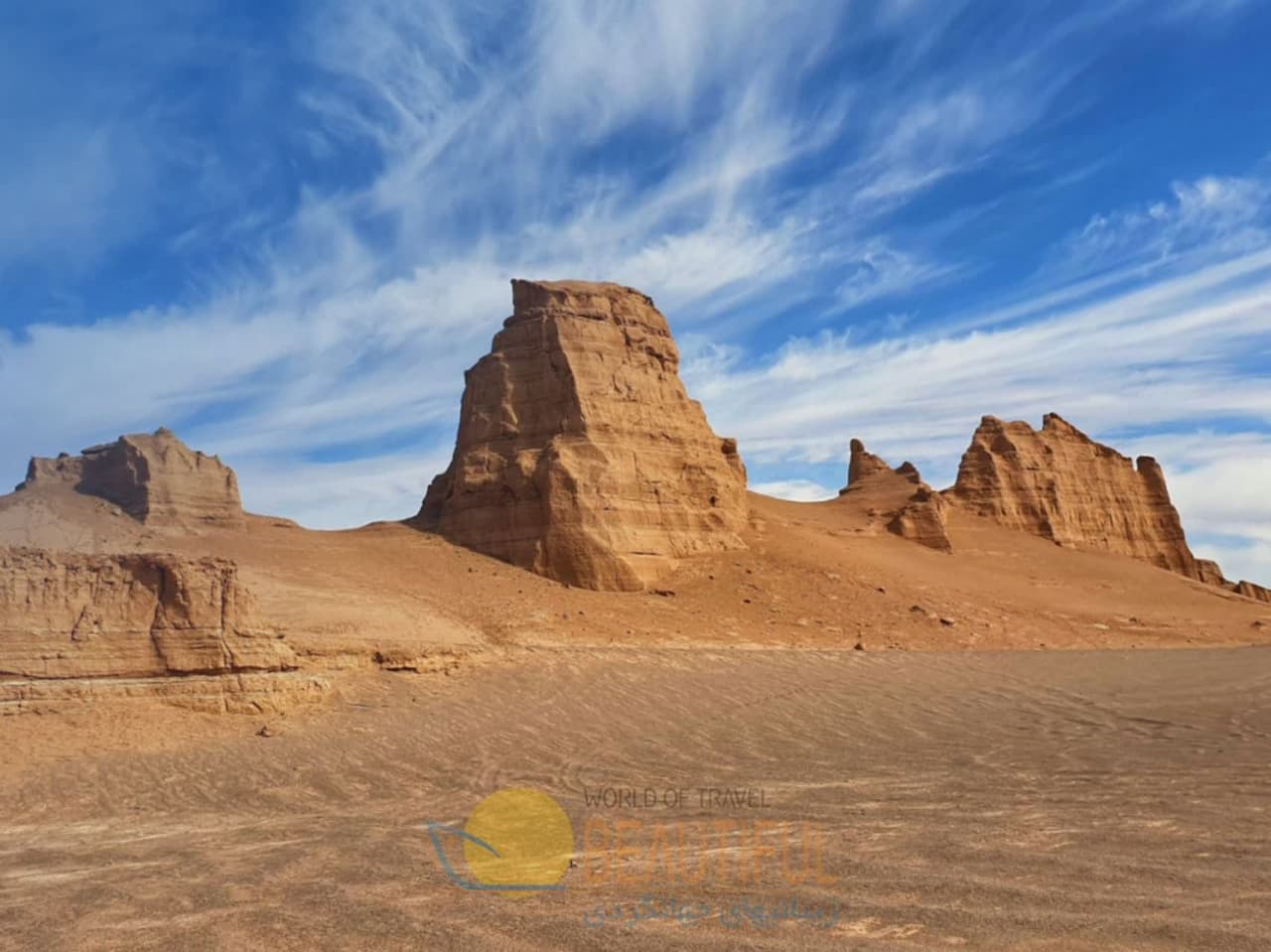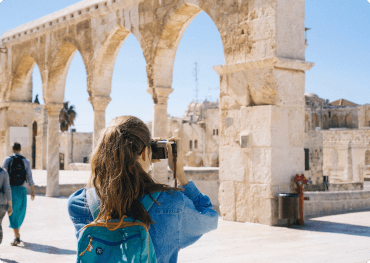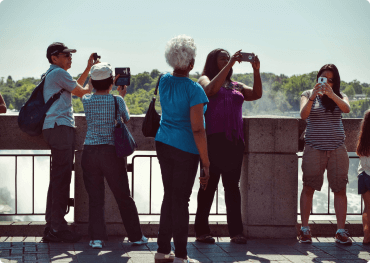
CU-123
Package Details
Day 1: Flight from your home country to Tehran capital of IRAN
Day 2: Tehran
Arrivals in Tehran International Airport, meet and assist at airport and transfer to the hotel. Afternoon: visiting Niavaran Palace and Bazaar e Tajrish and Enanzadeh Saleh mausoleum.
O/N: Tehran.
The Niavaran Complex is a historical complex situated in Shemiran, Tehran (Greater Tehran), Iran. It consists of several buildings and monuments built in the Qajar and Pahlavi eras. The complex traces its origin to a garden in Niavaran region, which was used as a summer residence by Fath-Ali Shah of the Qajar Dynasty.
A pavilion was built in the garden by the order of Naser ed Din Shah of the same dynasty, which was originally referred to as Niavaran House, and was later renamed Saheb Qaranie House. The pavilion of Ahmad Shah Qajar was built in the late Qajar period.
During the reign of the Pahlavi Dynasty, a modern built mansion named Niavaran House was built for the imperial family of Mohammad Reza Pahlavi. All of the peripheral buildings of the Saheb Qaranie House, with the exception of the Ahmad Shahi Pavilion, were demolished, and the buildings and structures of the present-day complex were built to the north of the Saheb Qaranie House. In the Pahlavi period, the Ahmad Shahi Pavilion served as an exhibition area for the presents from world leaders to the Iranian monarchs.
Imāmzādeh Sāleh is one of many Imāmzadeh mosques in Iran. The mosque is located at Tajrish Square in Tehran's northern Shemiran district. The mosque entombs the remains of Sāleh, a son of the Twelver Shī‘ah Imām, Mūsā al-Kādhim, and is one of the most popular Shī‘ah shrines in northern Tehran.
Day 3: Tehran- Kerman
After breakfast, visit Tehran Golestan Palace, Moghadam museum. After noon, transfer to train station for travel to Kerman. (departure at 19:45 PM) .We use night train to save one day for sightseeing, if we use to travel by air, we should go to the airport 4 hours before departure and have security check, it train we join with normal peoples and learn about habitant, customs and protocol.During rail trip, clients can drop in every station and know different peoples and culture
O/N: In Train
The Golestan Palace : literally the Roseland Palace, is the former royal Qajar complex in Iran's capital city, Tehran.The oldest of the historic monuments in Tehran, and of world heritage status, the Golestan Palace belongs to a group of royal buildings that were once enclosed within the mud-thatched walls of Tehran’s Historic Arg (citadel). It is a masterpiece of beautiful garden and buildings consist of collection of Iranian crafts and European presents from 18th and 19th century. Golestan Palace Complex consists of 17 structures including palaces, museums, and halls. Almost all of this complex was built during the 200 years ruling of Qajarian kings. These palaces were used for many different occasions such as coronation and other important celebrations. It also consists of three main archives as the royal photographic archive collection 'Album khane', the royal library of manuscripts 'Ketabkhane Nosakhe khati' and the archive of documents 'Markaze asnad'.
Day 4: Kerman
We arrive to Kerman at 09:50AM, transfer from rail station to the hotel and check in, start visiting Kerman.
Jame Mosque, Ganj Ali Khan Complex include Bazaar Bath and Museum.
O/N: Kerman.
The Ganjali Khan Complex is a Safavid-era building complex, located in the old center of city of Kerman, Iran. The complex is composed of a school, a square, a caravanserai, a bathhouse, an Ab Anbar (water reservoir), a mint, a mosque and a bazaar. The Ganjali Khan Complex was built by Ganj Ali Khan who governed Kerman, Sistan and Kandahar provinces from 1596 to 1621 under SafavidShah Abbas I. A number of inscriptions laid inside the complex indicate the exact date when these places have been built. The architect of the complex was Mohammad Soltani from Yazd. The complex covers an area of 11000 square meters and is centered on a large public square-ninety-nine meters by fifty-four meter—which is aligned with Vakil Bazaar running east-west to its south. The square is enveloped by bazaar arcades to the north, south and west and is flanked by the Ganjali Caravanserai to the east.
The entrance to the Ganjali bathhouse is located along a section of Vakil Bazaar south of the square, known as Ganjali Khan Bazaar. The complex was built in Isfahani style of architecture.
Ganjali Square: In ancient Iran, the squares of the cities were established near the governorships and were places for gatherings and ceremonies. The Ganjali square is ninety-nine meters by fifty-four meter, and Similar to Naqsh-e Jahan Square in Isfahan and Mir Chakhmagh Square in Yazd, is surrounded by urban elements such as bazaars, Caravanserais and schools.
Ganjali Bathhouse:Built in 1631, the Ganjali bathhouse is located on the southern side of Ganjali Square, off a section of Vakil Bazaar known as Ganjali Bazaar. The entrance of the building are painted with ornaments of the Safavid era. An interesting feature of its architectural finish is that the sculptured stones of the ceiling coincide with that of the flooring. It is composed of a disrobing room, cold room and hot room, all covered with domes carried on squinches. The Ganjali Baths are unique works of architecture decorated with exquisite tile works, paintings, stuccos, and arches. The bath house were converted into an anthropological museum in 1971. In the closet section and main yard of the bath there are many lifelike statues. These statues were designed at Tehran University's faculty of fine arts in 1973 and then transferred to this museum.
Ganjali Bazaar:The bazaar is located in southern part of Ganjali Square. Inside, the bazaar is decorated with exquisite plasterwork and wall paintings and although they are 400 years old, they are still well-preserved. The bazaar is 93 meters long and is connected to Ganjali square through 16 iwans and vaults.
Ganjali Caravanserai and Mosque: The caravanserai is located on the east side of the Ganjali Square. Its portal bears a foundation inscription from 1598 composed by calligrapherAlireza Abbasi. The plan of the caravanserai is based on the four-iwan typology, with double-story halls centered on tall iwans enveloping four sides of an open courtyard. There is an octagonal fountain at the center of the Courtyard which is chamfered at the corners. The caravanserai measures thirty-one and a half by twenty-three meters. It has a small domed mosque at one corner that measures five and a half by five meters.
Ganjali Mint: The mint’s construction started in 1598 and ended in 1625. The interior decorations consist of ochre plasterwork and brickwork. The building has a tall dome crowned by a cupola to admit light and vent air. The mint was converted into a numismatics museum in 1970. The museum displays coins from different periods such as Parthian, Sassanid, Safavid and Afsharid periods.
Day 5: Kerman - Shiraz
After breakfast, drive to Mahan and visit Bagh-e Shahzade (Prince garden), Shah Nematollah e Valli.
O/N: Shiraz.
Shazdeh Garden: Meaning Prince’s Garden is a historical Persian garden located near (6 km away from) Mahan in Kerman province, Iran.The garden is 5.5 hectares with a rectangular shape and a wall around it. It consists of an entrance structure and gate at the lower end and a two-floor residential structure at the upper end. The distance between these two is ornamented with water fountains that are engined by the natural incline of the land. The garden is a fine example of Persian gardens that take advantage of suitable natural climate. The garden was built originally for Mohammad Hasan Khan Qajar Sardari Iravani ca.1850 and was extended ca.1870 by Abdolhamid Mirza Naserodollehand during the eleven years of his governorship in the Qajar dynasty. The construction was left unfinished, due to the death of Abdolhamid Mirza in the early 1890s.
Afternoon, travel from Kerman to Shiraz by land (560 KM), arrival to Shiraz and check in to the hotel
Day 6: Shiraz
Morning: departure to Persepolis visiting capital of Darius (518 BC) the historic complex includes:
Kakh e sad Sooton (Hundred columns Palace), Museum, tomb of Ardeshir II and III. Nagsh-e
Rostam is another historic Place near Persepolis at this area visit tombs of Darius I & II
O/N: Shiraz.
Persepolis literally meaning "the Persian city," also known as the Throne of Jamshid, was the ceremonial capital of the Achaemenid Empire (ca. 550–330 BC).Persepolis is situated 60 km northeast of the city of Shiraz in Fars Province, Iran. The earliest remains of Persepolis date back to 515 BC. It exemplifies the Achaemenid style of architecture. UNESCO declared the ruins of Persepolis a World Heritage Site in 1979.
Together with Naqsh-e Rustam, which lies less than a kilometer away, the site is part of the Marvdasht cultural complex. Together, the two sites are a tentative candidate for UNESCO World Heritage status. Naqsh-e Rajab is the site of four limestone rockface inscriptions and rock-cut bas-reliefs that date to the early Sassanid era. One of the carvings is the investiture inscription of Ardeshir I (ruled in 226-241 CE), the founder of the dynasty. The second investiture inscription is Ardeshir's successor, Shapur I (241-272 CE). A third bas-relief, known as 'Shapur's Parade' celebrates the king's military victory in 244 over the Roman emperor Valerian and Philip the Arab. A fourth bas-relief and inscription is attributed to Kartir, high priest under Shapur I and his sons Hormizd I (272-273 CE) and Bahram I (273–276 CE).
Afternoon: return to Shiraz visit Aramgah-e Saadi and Hafez (tombs of the Iranian Poets).
Khwāja Shams-ud-Dīn Muḥammad Ḥāfeẓ-e Shīrāzī: known by his pen name Hafez: was a Persian poet who "laudthe joys of love and wine [but] also targeted religious hypocrisy." His collected works are regarded as a pinnacle of Persian literature and are to be found in the homes of most people in Iran, who learn his poems by heart and still use them as proverbs and sayings. His life and poems have been the subject of much analysis, commentary and interpretation, influencing post-14th century Persian writing more than any other author. Themes of his ghazals are the beloved, faith, and exposing hypocrisy. His influence in the lives of Persian speakers can be found in "Hafez readings"and the frequent use of his poems in Persian traditional music, visual art, and Persian calligraphy. His tomb is visited often. Adaptations, imitations and translations of his poems exist in all major. Hafez was born in Shiraz, Iran. His parents were from Kazerun, Fars Province. Despite his profound effect on Persian life and culture and his enduring popularity and influence, few details of his life are known. Accounts of his early life rely upon traditional anecdotes. Early tazkiras (biographical sketches) mentioning Hafez are generally considered unreliable. At an early age, he memorized the Quran and was given the title of Hafez, which he later used as his pen name. The preface of his Divān, in which his early life is discussed, was written by an unknown contemporary whose name may have been Moḥammad Golandām. Two of the most highly regarded modern editions of Hafez's Divān are compiled by Moḥammad Ghazvini and Qāsem Ḡani (495 ghazals) and by Parviz Natel-Khanlari
Abū-Muhammad Muslih al-Dīn bin Abdallāh Shīrāzī better known by his pen-name Saadi, also known as Saadi of Shiraz was one of the major Persian poets and literary men of the medieval period. He is not only famous in Persian-speaking countries, but has been quoted in western sources as well. He is recognized for the quality of his writings and for the depth of his social and moral thoughts. Saadi is widely recognized as one of the greatest poets of the classical literary tradition. Born in Shiraz, Iran, c. 1210, his father died when he was a child. He narrates memories of going out with his father as a child during festivities.In his youth, Saadi experienced poverty and hardship and left his native town for Baghdad to pursue a better education. As a young man he enrolled at the Nizamiyya University, where he studied in Islamic sciences, law, governance, history, Arabic literature, and Islamic theology. aadi came back to Shiraz before 1257 CE / 655 AH (the year he finished composition of his Bustan). Saadi has mourned in his poetry the fall of Abbasid Caliphate and Baghdad's destruction by Mongol invaders led by Hulagu in February 1258. When he reappeared in his native Shiraz, he might have been in his late forties. Shiraz, under Atabak Abubakr Sa'd ibn Zangy (1231–60), the Salghurid ruler of Fars, was enjoying an era of relative tranquility.
Saadi was not only welcomed to the city but was shown great respect by the ruler and held to be among the greats of the province. In response, Saadi took his nom de plume from the name of the local prince, Sa'd ibn Zangi. Some of Saadi's most famous panegyrics were composed as a gesture of gratitude in praise of the ruling house and placed at the beginning of his Bustan. The remainder of Saadi's life seems to have been spent in Shiraz.
Day 7: Shiraz - Yazd
Early morning travel from Shiraz to Yazd(440 KM) via Abarkooh on the way visiting Pasargadae, the capital of Cyrus the Great (559–530 BC) and also his last resting place, was a city in ancient Persia, and is today an archaeological site and One of Iran's UNESCO World Heritage Sites, lunch in lunch.box. The most important monument in Pasargadae is the tomb of Cyrus the Great. It has six broad steps leading to the sepulchre, the chamber of which measures 3.17 m long by 2.11 m wide by 2.11 m high and has a low and narrow entrance. Though there is no firm evidence identifying the tomb as that of Cyrus, Greek historians tell that Alexander believed it was. When Alexander looted and destroyed Persepolis, he paid a visit to the tomb of Cyrus.
Arrian, writing in the second century AD, recorded that Alexander commanded Aristobulus, one of his warriors, to enter the monument. Inside he found a golden bed, a table set with drinking vessels, a gold coffin, some ornaments studded with precious stones and an inscription on the tomb.
Evening arrival to Yazd visit Borje sokoot (Tower of silent is Zoroastrian tomb).
O/N: Yazd.
Day 8: Yazd
Full day visiting Yazd: Zoroastrian fire temple, Jame mosque, Amir Chakhmagh Sq. Dolat Abad
Grand, Alexander prison and old Bazaar.
Zoroastrian fire temple: The main building temples on height of about 21 meters off the ground and in the large yard trees evergreen cypress and pine covered, is located. Figure Forouhar and stone capitals that gives it a special beauty blue pond in front of the building. The temples of properties Altar of the water. The Hall's main building and a wall of stone capitals flowering gems work of artists from Isfahan. This rock artists in Isfahan shaved and then to Yazd have. Tile journalist Forouhar on the entrance, a tile Yazdi artists and architecture of this building of architecture Corp fire temples was persuaded impact. The current building temples of Yazd in November of 1313 with a capital of a Zoroastrian Parsicalled "Hmabayy" on a piece of land by a number of Zoroastrians in Iran, including loan brothers remember their father's death, "Ardeshir kind of Rustam" trust endowment was to be built.
Map Pars brought the building and " Lord Jim trust " had been supervising the building. He wrote in his memoirs that to draw attention Corp of India , has traveled five times to that territory. Four times with steamships on the rough waters of the Indian Ocean and once on foot and by camel in Rigzarhay Baluchistan of Iran and Pakistan until India Forums afford.
Dolatabad garden :from the gardens of the old city of Yazd in Iran .
Windward adobe building the tallest tower with a height of 33/8 meters known in the world. The garden on 23/12/1346 in row No. 774 national monuments are located, and also one of the Persian Gardens registered in the World Heritage Site by UNESCO is.
Alexander prison or Ziaeih school is a school with about eight centuries old, in fact, that in the neighborhood Fhadan the city of Yazd in the vicinity of the tomb of the twelve Imamsactually been produced. The built in 631 AD by the famous mystic Zia Hussain Razi was built in 705 AD and was completed by his sons Majd Ali Hassan and Shafaruddin. Parts of the building can be a hole with a diameter of about 2 meters in the middle of the school yard which has a depth of about 5 meters leads to the basement, dome of the monument to the height of 18 meters and has Gchbryhay and decorating beauty with golden and blue color that much of it has been undermined.
O/N: Yazd.
Day 9: Yazd – Isfahan
Early morning travel from Yazd to Isfahan (322 KM) via Naein on the way visiting Jame Mosque . Evening: Arrival to Isfahan.
Jāmeh Mosque of Nain: is the grand, congregational mosque (Jāmeh) of Nā'īn city, within Isfahān Province of Iran. Although the mosque is one of the oldest in Iran, it is still in use and is protected by Iran's Cultural Heritage Organization. The mosque is one of the oldest in Iran, dating back to the 9th century. The interiors however are Seljuki in brick craftsmenship, and therefore allude to the 11th century.
O/N: Isfahan.
Day 10: Isfahan
Full day visiting Isfahan: Naghsh e Jahan Square, Emam Mosque, Alighapoo Palace, Sheykh
Lotf-ol lah Mosque, old Bazaar, Chehel soton.
Naqsh-e Jahan Square: Image of the World Square, known as Imam Square, formerly known as Shah Square, is a square situated at the center of Isfahan city, Iran. Constructed between 1598 and 1629, it is now an important historical site, and one of UNESCO's World Heritage Sites. It is 160 metres (520 ft) wide by 560 meters (1,840 ft) long (an area of 89,600 square metres (964,000 sq ft)). The square is surrounded by buildings from the Safavid era. The Shah Mosque is situated on the south side of this square. On the west side is the Ali Qapu Palace. Sheikh Lotf Allah Mosque is situated on the eastern side of this square and at the northern side Keisaria gate opens into the Isfahan Grand Bazaar. Today, Namaaz-e Jom'eh (the Muslim Friday prayer) is held in the Shah Mosque. The square is depicted on the reverse of the Iranian 20,000 rials banknote.
The Crown Jewel in the Naghs-e Jahan Square was the Masjed-e Shah, which would replace the much older Jameh Mosque in conducting the Friday prayers. To achieve this, the Shah Mosque was constructed not only with vision of grandeur, having the largest dome in the city, but Shaykh Bahai also planned the construction of a religious school and a winter-mosque clamped at either side of it.
Of the four monuments that dominated the perimeter of the Naqsh-e Jahan square, the Lotfollah Mosque, opposite the palace, was the first to be built. The purpose of this mosque was for it to be a private mosque of the royal court, unlike the Shah mosque|Masjed-e Shah, which was meant for the public. For this reason, the mosque does not have any minarets and is of a smaller size. Indeed, few Westerners at the time of the Safavids even paid any attention to this mosque, and they certainly did not have access to it. It wasn't until centuries later, when the doors were opened to the public, that ordinary people could admire the effort that Shah Abbas had put into making this a sacred place for the ladies of his harem, and the exquisite tile-work, which is far superior to those covering the Shah Mosque.
Ali Qapu Palace: Ali Qapu (pronounced, ah-lee gah-pooh) is in effect but a pavilion that marks the entrance to the vast royal residential quarter of the Safavid Isfahan which stretched from the Maidan Naqsh-i-Jahan to the Chahar Bagh Boulevard. The name is made of two elements: "Ali", Arabic for exalted, and "Qapu" Turkic for portal or royal threshold. The compound stands for "Exalted Porte". This name was chosen by the Safavids to rival the Ottomans' celebrated name for their court: Bab-i Ali, or the "Sublime Porte"). It was here that the great monarch used to entertain noble visitors, and foreign ambassadors. Shah Abbas, here for the first time celebrated the Nowruz (New Year's Day) of 1006 AH / 1597 A.D. A large and massive rectangular structure, the Ali Qapu is 48 m (157 ft) high and has six floors, fronted with a wide terrace whose ceiling is inlaid and supported by wooden columns. On the sixth floor, the royal reception and banquets were held. The largest rooms are found on this floor. The stucco decoration of the banquet hall abounds in motif of various vessels and cups. The sixth floor was popularly called (the music room) as it was here that various ensembles performed music and sang songs. From the upper galleries, the Safavid ruler watched polo games, maneuvers and horse-racing below in the Naqsh-i-Jahan square.
At night, visit Old Bridge Se o Se Pol (Big Bridge with 33 arches) and Khajo Bridge.
O/N: Isfahan.
Day11: Isfahan - Kashan
After breakfast, visit Isfahan Kelisa-Ye vank (Armenian Church Beautiful interior decoration).
Before lunch, travel from Isfahan to Kashan (218 KM) on the way Abyaneh Village.
Abyaneh is a village in Barzrud Rural District, in the Central District of Natanz County, Isfahan Province, Iran. At the 2006 census, its population was 305, in 160 families. Characterized by a peculiar reddish hue, the village is one of the oldest in Iran, attracting numerous native and foreign tourists year-round, especially during traditional feasts and ceremonies. An Abyanaki woman typically wears a white long scarf (covering the shoulders and upper trunk) which has a colourful pattern and an under-knee skirt.
O/N: Kashan.
Day12: Kashan - Tehran
After breakfast, visit Kashan (Brojerdi and Tabatabai old houses, Fien Garden.
Evening drive to Tehran.
Fin Garden, or Bagh-e Fin, located in Kashan, Iran, is a historical Persian garden. It contains Kashan's Fin Bath, where Amir Kabir, the Qajarid chancellor, was murdered by an assassin sent by King Nasereddin Shah in 1852. Completed in 1590, the Fin Garden is the oldest extant garden in Iran.
The origins of the garden may be anterior to the Safavid period; some sources indicate that the garden has been relocated from another place, but no clear picture of it has been found.
The settlements of the garden in its present form was built under the reign of Abbas I of Persia (1571-1629), as a traditional bagh near the village of Fin, located a few kilometres southwest of Kashan.
The garden was developed further during the Safavid dynasty, until Abbas II of Persia (1633-1666). It was highly recognized during the reign of Fat′h Ali Shah Qajar and was considerably expanded.
The garden subsequently suffered from neglect and was damaged several times until, in 1935, it was listed as a national property of Iran. On 2007, 8 September, Bagh-e Fin was submitted to the Unesco's Tentative List.
Unesco declared the garden a World Heritage Site on July 18, 2012.
Home Borujerdian the historic city of Kashan is. The building is located in the neighborhood Sultan Mir Ahmad and in the second half of the 13th century Hijri built in Qajar era and was registered under the number 1083 in the national index.
The house has a beautiful crescent-shaped symmetrical vents on the roof of the hall and pergola on one of the most beautiful manifestations of Persian architecture to display it. So that the inscriptions on all four sides of the hall, the building dates back to 1292 BC E…
Paintings, valuable and Gchbryhay this house, under the Sani-ol-Molk, the great Iranian painter and uncle Kamalolmolk been implemented. The owner of the house, Haj Seyed Mehdi Natanz Natanz businessmen residing in Kashan and architect of the master Ustad Ali Maryam was. Because of his many trips to the city of Boroujerd have known Boroujerdi. He loved the girl’s Tabatabai Tabatabai also one of the largest carpet merchant, and then leaves to consent to the marriage condition. His beautiful home which is now called the house Tabatabaian known as lived and Mehdi says he must build a house like my house to get my daughter to Hmsryt in. Mehdi also accepts and ends after 7 years to build the inner courtyard and living at home after 11 years in the main hall is completed. Boroujerdi House in Kashan Cultural Heritage Administration is now home.
Brvjrdyhay historic house in Kashan in terms of popularity tourist attraction as a top choice UNESCO in 2015 and 2016 respectively.
Home Tabatabaian which was registered under number 1504, in the second half of the 13th century AH by Haj Seyed Jafar Tabatabai merchants Natanz resident of Kashan in the neighborhood Sultan Amir Ahmad was built.
Architect manufacturer of the master Ustad Ali Maryam and plaster involved in the art and drawings by students Mirza Abul Hassan Sani-ol-Molk Ghaffari Kashani, and under him were doing.
Day13: Departur
Early morning fly back to home and ending memorable trip to Great Iran
Details
Pellentesque accumsan magna in augue sagittis, non fringilla eros molestie. Sed feugiat mi nec ex vehicula, nec vestibulum orci semper. Class aptent taciti sociosqu ad litora torquent per conubia nostra, per inceptos himenaeos. Donec tristique commodo fringilla. Duis aliquet varius mauris eget rutrum. Nullam sit amet justo consequat, bibendum orci in, convallis enim. Proin convallis neque viverra finibus cursus. Mauris lacinia lacinia erat in finibus.
Pellentesque accumsan magna in augue sagittis, non fringilla eros molestie. Sed feugiat mi nec ex vehicula, nec vestibulum orci semper. Class aptent taciti sociosqu ad litora torquent per conubia nostra, per inceptos himenaeos. Donec tristique commodo fringilla.
- Specilaized Bilingual Guide
- Private Transport
- Entrance Fees
- Box Lunch,Water,Dinner and Snacks
Pellentesque accumsan magna in augue sagittis, non fringilla eros molestie. Sed feugiat mi nec ex vehicula, nec vestibulum orci semper. Class aptent taciti sociosqu ad litora torquent per conubia nostra, per inceptos himenaeos. Donec tristique commodo fringilla.
- Specilaized Bilingual Guide
- Private Transport
- Entrance Fees
- Box Lunch,Water,Dinner and Snacks
Pellentesque accumsan magna in augue sagittis, non fringilla eros molestie. Sed feugiat mi nec ex vehicula, nec vestibulum orci semper. Class aptent taciti sociosqu ad litora torquent per conubia nostra, per inceptos himenaeos. Donec tristique commodo fringilla.
- Specilaized Bilingual Guide
- Private Transport
- Entrance Fees
- Box Lunch,Water,Dinner and Snacks
Pellentesque accumsan magna in augue sagittis, non fringilla eros molestie. Sed feugiat mi nec ex vehicula, nec vestibulum orci semper. Class aptent taciti sociosqu ad litora torquent per conubia nostra, per inceptos himenaeos. Donec tristique commodo fringilla.
- Specilaized Bilingual Guide
- Private Transport
- Entrance Fees
- Box Lunch,Water,Dinner and Snacks
Pellentesque accumsan magna in augue sagittis, non fringilla eros molestie. Sed feugiat mi nec ex vehicula, nec vestibulum orci semper. Class aptent taciti sociosqu ad litora torquent per conubia nostra, per inceptos himenaeos. Donec tristique commodo fringilla.
- Specilaized Bilingual Guide
- Private Transport
- Entrance Fees
- Box Lunch,Water,Dinner and Snacks






















